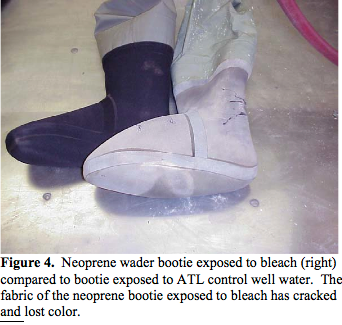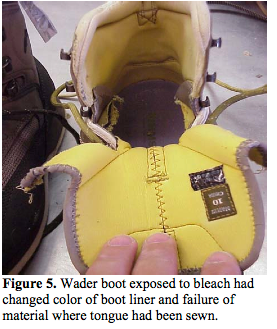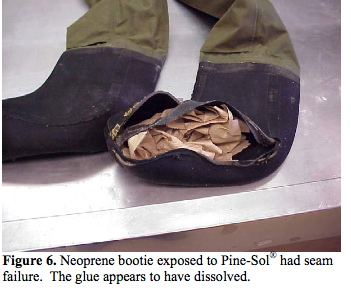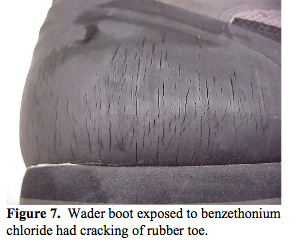There is another felt sole discussion on another BB. Here is a post I made about wading boots and waders.
One of the best methods of reducing invasives is one that is rarely mentioned. That is the boot foot waders that completely eliminate the wading boot. It eliminates the possibility of getting invasives into the innards of a separate wading boot.
It would get rid of laces, boot tongues, wader guards, and the inner boot. Invasives get between the stocking foot wader and the wading boot and between the wading boot footbed and inner boot. The felt is only one part of the wading boot/stocking foot wader system that is susceptible to hitch hikers.
The State of California* Department of Fish and Game did a study on "CONTROLLING THE SPREAD OF NEW ZEALAND MUD SNAILS ON WADING GEAR"
They found that the New Zealand Mud Snails work their way into locations well away from felt soles and into areas not normally inspected like under the insoles of wading boots.
"The majority of NZMS recovered were associated with wading boots. NZMS were observed on the tongue area of wading boots, associated with the laces or the area of the tongue that was tucked beneath the lacing eyelets. Large numbers of small NZMS were present inside of the boots, having worked down between the boot and the neoprene bootie of the wader. If the boots contained padded insole inserts, NZMS were also found underneath the inserts, associated with sand grains. NZMS were recovered from every treated set of wading gear. Numbers of NZMS per sample ranged from 1 to 227 with a mean of 33 (Appendix 2). Over 50% of NZMS recovered were < 1 mm in size (Table 4)."
http://tinyurl.com/cg73x43
Why don't manufacturer's tout boot foot waders? Could it be that they want to sell both boots and waders? If separate boots are a problem as well as the felt, get rid of the separate boot.
In fact, why not outlaw stocking foot waders and wading boots entirely? This would reduce the chance of transport as much as outlawing felt. It would provide a seamless connection to the boot section of a wader without all the need for drainage holes and crevices that that wading boots provide. The reason is $$$. Simms and the other manufacturers want to sell both a boot and a wader. When manufacturers say that eliminating felt soles is the best method of controlling invasives, I remain a sceptic.
The same California study found that chemical decontamination eventually destroyed the waders and boots. Bleach for example is an oxidizer and damages gear. Any spill or drips in your vehicle will damage upholstery and carpets. That is why manufacturers recommend rinsing and drying gear without the use of chemicals.
Here are some photos gear that has been chemically decontaminated.
Bleach
Pine Sol
Bezethonium Chloride





